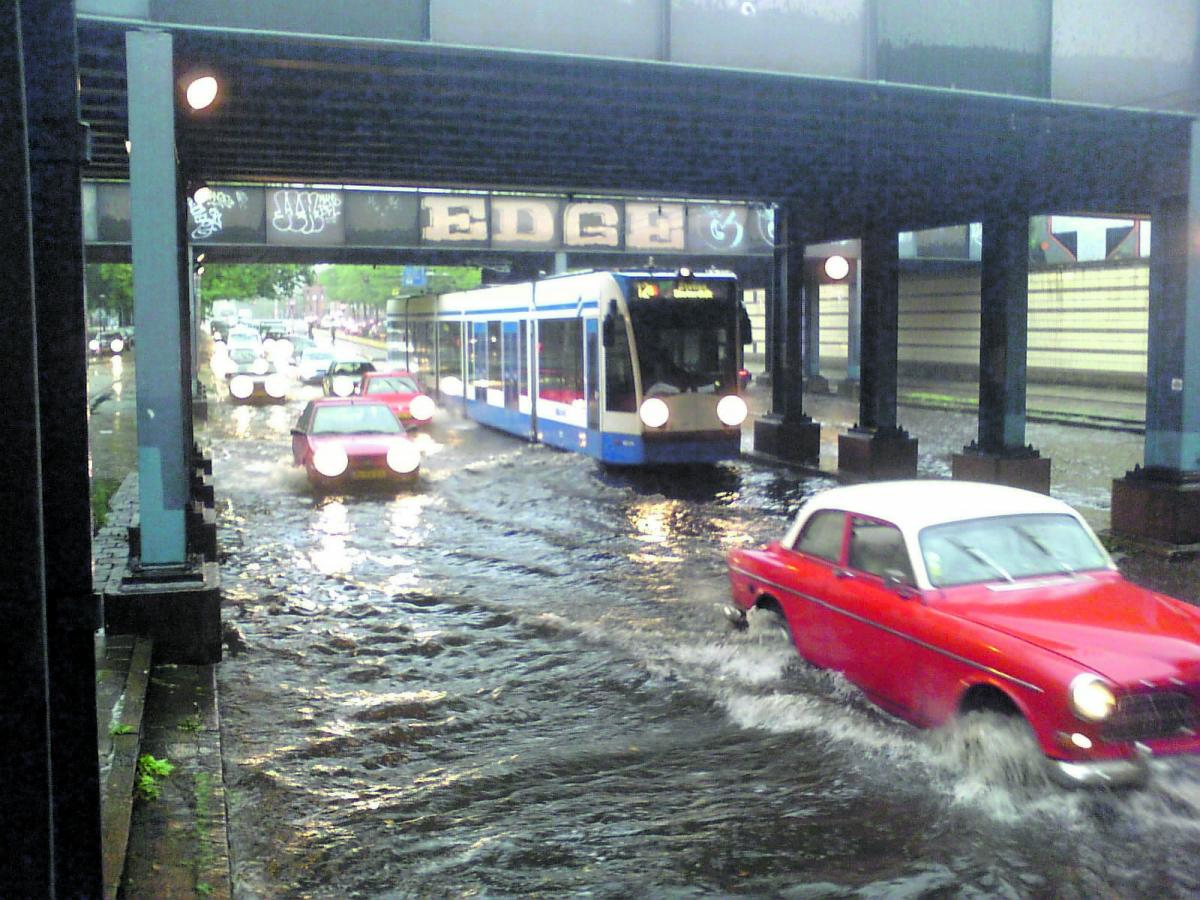All Dutch municipalities will have to undergo a stress test by 2019 to assess how well they cope with extreme weather events such as heavy rainfall and drought. Or so said Delta Programme commissioner, Wim Kuijken.
The climate is changing more rapidly than we had previously assumed, said Kuijken on Prinsjesdag, the official opening of Parliament in September. Downpours are becoming increasingly intense, periods of drought and heat are becoming more extreme, and the risk of flooding is growing. Delta Programme’s goal is to climate-proof the Netherlands and make it water-resilient by 2050. To achieve this, it is time to step up the pace.
What the climate stress tests imply has not been made public yet. “We are curious to hear more about it,” says Dr Marie-Claire ten Veldhuis, assistant professor of urban hydrology (CEG faculty). “What kind of stress situations do they want to simulate? And what outcomes do they find acceptable. It is still quite vague.”
Ten Veldhuis agrees that it is time for ‘a wake-up call’ though. “Drainage systems in cities were designed so that on average the streets get inundated once every two years for a few hours during heavy downpours. However, heavy downpours are increasing in frequency. They usually occur in the summer. The limit of once every two years is being exceeded.”
Cities like Tokyo and Yokohama in Japan struggled with similar problems. There, large tunnels and basins were constructed underground to collect excess water. “These are very expensive infrastructural measures that are not necessarily appropriate for the Dutch situation,” says the Delft expert.
‘Heavy downpours seldom lead to dangerous situations in flat areas like the Netherlands’
What measures does Ten Veldhuis advocate? “You need to look at this from a risk perspective: not only the frequency but the damage of weather events is important. Heavy downpours seldom lead to dangerous situations in flat areas like the Netherlands. Flood depths in polders are small, they may get to knee height. You could chose to accept some flooding and help potential victims to prevent damage or compensate afterwards. This is a less robust, but much more flexible way to cope with the uncertainties associated with climate change.”
Urban water system expert, Dr Frans van de Ven (CEG Faculty), believes it is a good idea to test that critical infrastructure like electricity networks, telephone networks and the main roads can withstand heavy rainfall. “Hospitals should also be tested. Emergency aggregates should not be placed in basements, for instance. And they should be well protected from flooding. And pumps could be used to protect low lying underpasses in highways.”
“Municipalities should also ask themselves whether they are sufficiently protected from heat. Heat stress is a problem that is connected with water. Cities need to transpire. They can lose a lot of their heat through the evaporation of water. Therefore cities should contain enough green, parks and open water.”



Comments are closed.